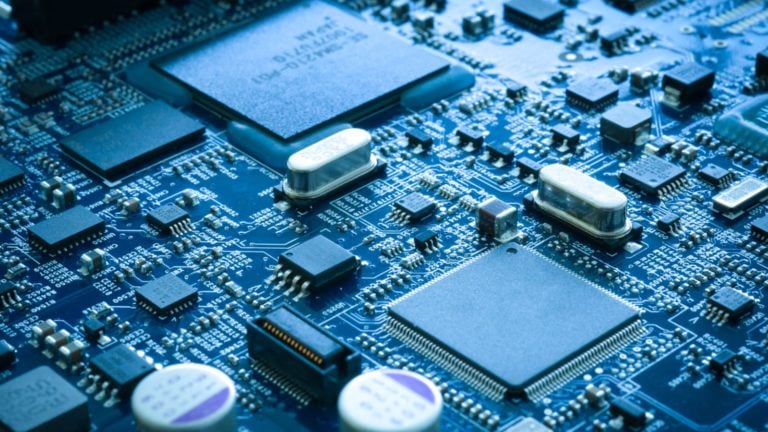As we traverse through a tumultuous 2023, the semiconductor market is facing a confluence of challenges which beckons the question of semiconductor stocks to sell.
Gartner’s projections point to an 11.2% decline in global semiconductor revenue in 2023, a downturn fueled by multiple economic, technological, and geopolitical factors. Economic headwinds are shifting end-market electronics demand from consumers to businesses, and an oversupply of chips is weighing down inventories and chip prices. Further, the memory industry is feeling the pinch, expecting a 35.5% revenue drop in 2023 due to overcapacity and surplus inventory.
With these factors in mind, the case for avoiding semiconductor stocks grows stronger. The semiconductor stock risks are palpable, and understanding them is critical for prudent investors.
Intel (INTC)

In an audacious move to reposition itself against the stalwarts in the semiconductor space, Intel (NASDAQ:INTC) is burning through cash at an alarming pace. To fuel this daring play, it announced a whopping $33 billion for two new chip fabrication plants in Germany.
However, it left investors puzzled, with heavy spending coming hot on the heels of Intel’s record-breaking net loss in May. Not long ago, Intel slashed its annual payout from $1.46 per share to a modest $0.50 per share due to its negative cash flow in 2022.
The road to recovery is proving to be a bumpy ride for Intel shareholders. The company’s stock continues to trade in the red. Moreover, its top-line and EBITDA growth are at a negative 27% and 68.7%, respectively. Also, its free cash flow margins have tanked more than 18% during the same period.
Micron Technology (MU)

Micron Technology (NASDAQ:MU) is another semiconductor player trying to navigate the stormy seas in its niche. With its top and bottom-line growth in the doldrums due to a myriad of challenges discussed earlier, it grapples with another daunting challenge.
Amidst the geopolitical tensions between the U.S. and China, roughly 50% of the sales generated from China are at potential risk. In an attempt to pivot, Micron might direct its products to other markets. However, an oversupply could ignite a price depression on a global scale.
Amid this uncertainty, Micron forecasts a modest uptick in the fourth quarter. Its revenue is expected to touch $3.9 billion, a marginal improvement over the prior-year period. Gross margins, too, anticipate a leap to -10.5%. Despite the company’s optimism about recovering in the second half of the year, these projections fall short of long-term potential. As the company treads this rocky path, its journey to recovery remains uncertain.
Texas Instruments (TXN)

Texas Instruments (NASDAQ:TXN) is one of the top players in the semiconductor industry, consistently charting a path toward organic growth and shareholder return. This strategy has yielded strong gross profit and EBITDA margins over the past decade allowing the firm to solidify its position in its sector.
However, the firm is witnessing a late contraction in free cash flow margins as it operates in a highly unconducive market. Factors such as a sales slowdown, swelling inventory, and elevated capital expenditures have throttled free cash flow generation. With a substantial capex target of $5 billion annually for the next three years, the company’s cash reserves could take a major hit. Additionally, the inventory’s increasing grip on cash conversion is a concern, with its days in inventory value worst than almost 60% of its peers. On top of that, its debt-to-equity ratio is worse than 78% of its peers now. Hence, the road ahead seems laden with financial hurdles for Texas Instruments.
On the date of publication, Muslim Farooque did not have (either directly or indirectly) any positions in the securities mentioned in this article. The opinions expressed in this article are those of the writer, subject to the InvestorPlace.com Publishing Guidelines
